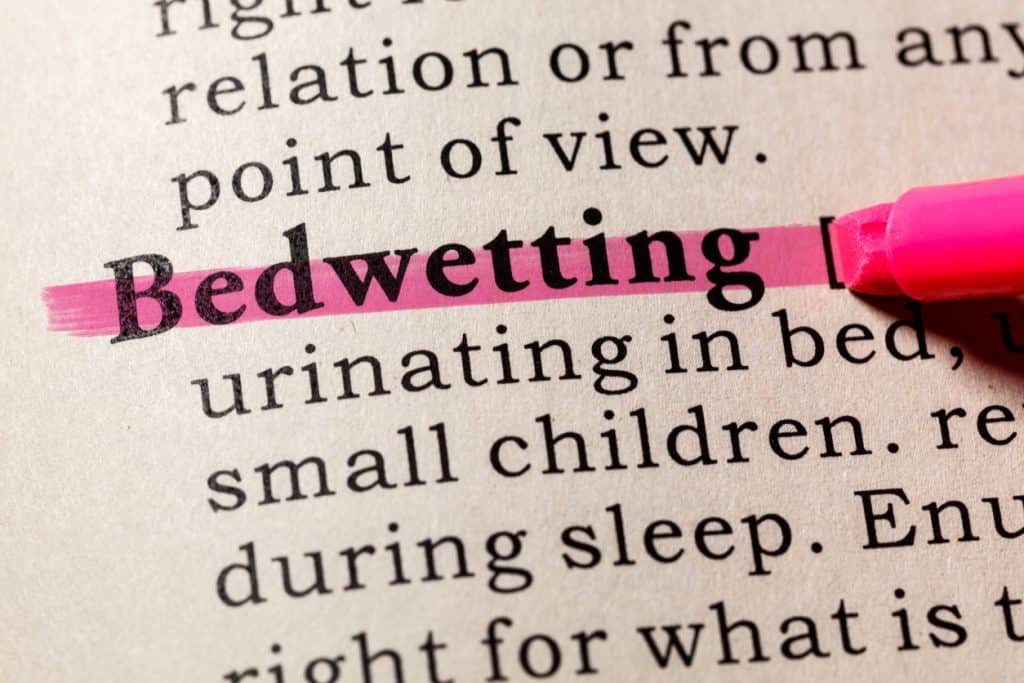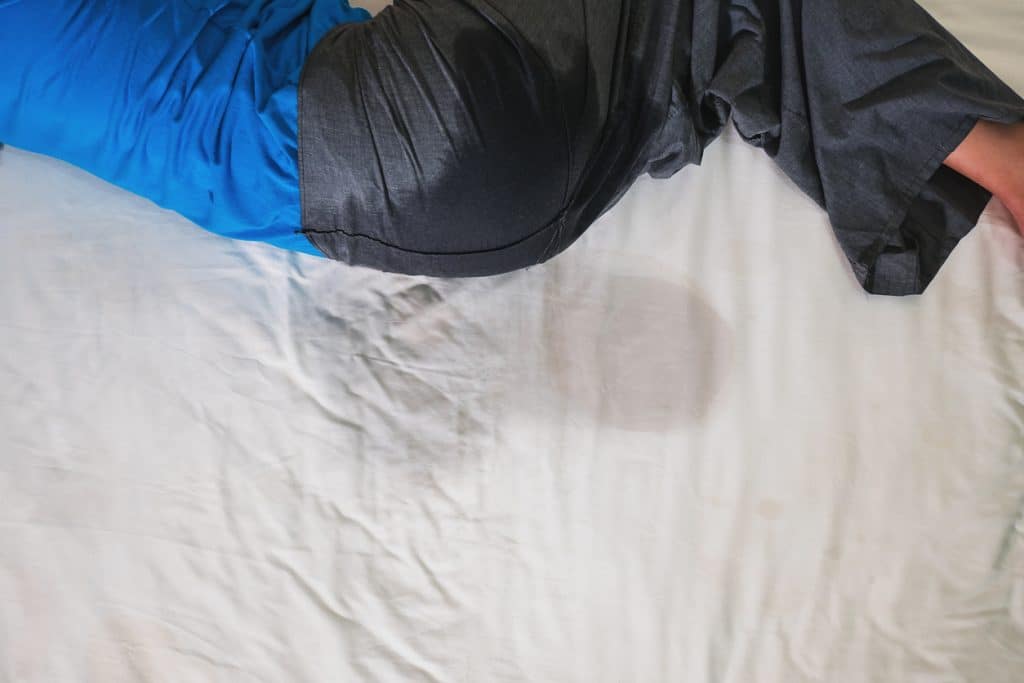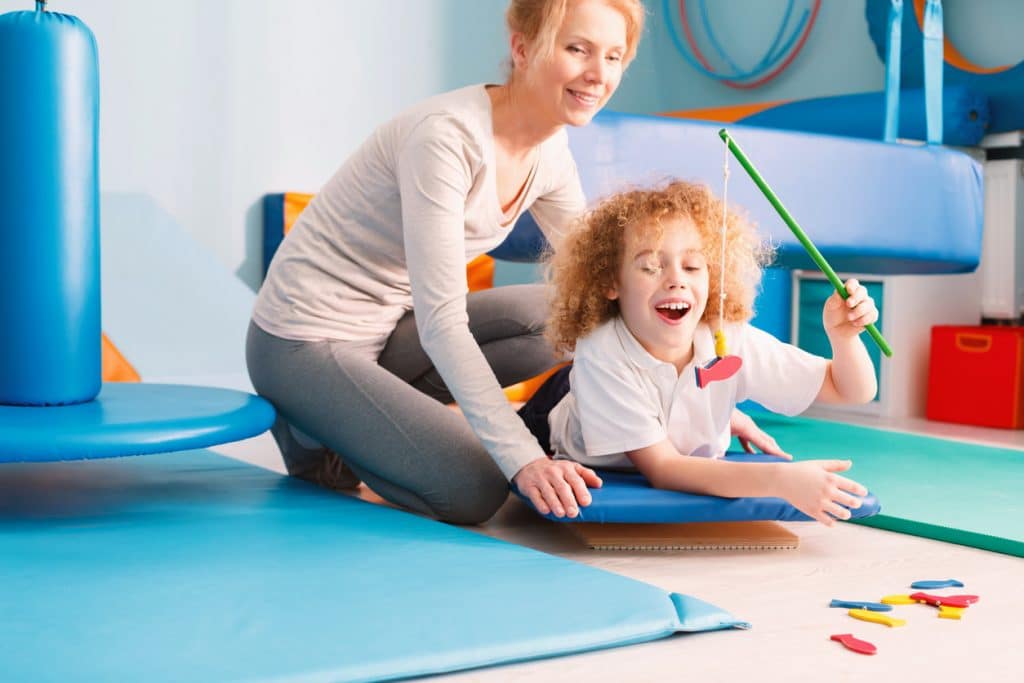
It’s such a common assumption and one that seems hard to believe, honestly. That “every child still in nighttime pull-ups at the age of 5 will magically outgrow their bedwetting, eventually”.
For those who have never experienced the weight of dealing with bedwetting in older children, it’s easy to brush the issue off and assume bedwetting in older children is not a big deal.
Yes, children who lack bladder control through the night due to a genetic predisposition will spontaneously outgrow bedwetting at a rate of 15% per year. But what about those who don’t? And what about those with other causes like overactive bladder and constipation…what happens to them? Those causes aren’t things you can “grow out of”.
Bedwetting Statistics
We know between 15-20% of children wet the bed at age 5. That percentage drops to 2% by age 11, and stays at 2% by the age of 19.
What does this tell us? That not all kids actually outgrow bedwetting.
To put it into perspective, the 2% of children who have persistent bedwetting into their teen years equates to over 5 million individuals. And the proportion of children with severe symptoms only increases with age.
There are well over 2 million adults in the United States also suffering from enuresis. That’s over 2 million people who didn’t “just outgrow” bedwetting.
Additionally, less than half of children suffering from bedwetting have symptoms solely at night. Most of the time they’re dealing with bowel and/or bladder issues during the day as well.
This is important to note, as these children will have significant improvements in their quality of life with intervention. It’s more than just being able to have sleepovers. Bedwetting is often one of many issues going on, and it affects children’s self-esteem, mental health, and relationships as well.
It’s easy to see, taking the numbers into perspective, that this population is underserved and needs pediatric pelvic floor therapists now more than ever. Addressing enuresis, as with almost every other diagnosis, is easier and more successful when treatment is started early on.
What Causes Bedwetting?

Bedwetting is still fairly poorly understood from the mainstream medical perspective. Although we don’t know the exact reason every single child develops persistent enuresis, there are plenty of causes we are aware of.
Stress, trauma or traumatic events, and positive family history are all commonly proposed but not statistically significant etiologic factors in those with long term issues.
Primary enuresis has three main causes:
- Failure to produce antidiuretic hormone (ADH) at night due to genetic predisposition or obstructed airway disorders. Normally, we produce this hormone at night to slow down the function of the kidneys so we don’t have to get up every 2-4 hours through the night to go to the bathroom. In children who don’t produce ADH, the kidneys are making urine at the same rate through the night as they do during the day, but the child sleeps through the sensation of urge. The silver lining is that it’s better to leak the urine than have it back up into the kidneys!
- Detrusor overactivity. The number 1 cause of overactive bladder is constipation, which brings us to the third main cause.
- Constipation. This is the leading cause of bedwetting and associated with most cases. Oftentimes, constipation stems from lifestyle choices such as diet, physical activity, and bowel or bladder schedules.
Regardless of the cause, children whose bedwetting does not spontaneously resolve have one thing in common: their episodes of bedwetting are more frequent. These children wet the bed at least 3 times per week, and often in severe cases, every night of the week.
Many families dealing with bedwetting are surprised to learn their child is constipated. Some parents are constipated themselves and don’t even realize their children’s infrequent bowel movements are a problem. Most are unaware that a child can be constipated even if they have a bowel movement every day!
Bedwetting related to constipation is treatable, and best managed if detected early-on. When constipation is not treated, and it’s contributing to a child’s bedwetting, the chances of the bedwetting resolving on its own are slim.
Of course, there are cases where a constipated child spontaneously becomes less constipated due to the nature of their surroundings — maybe they broaden their palette as they get a bit older, move to a new classroom with a better bathroom policy, or simply are able to get on a better toileting schedule.
Ideally, all children with constipation would see it resolve before adulthood, but this is simply not reality.
Constipation and Bedwetting

The link between constipation and bedwetting is clear. 63% of bedwetting children experience complete resolution of enuresis once their constipation is resolved.
Chronic constipation causes a build up of stool in the rectum and colon. This buildup will cause the rectum to stretch in order to accommodate the built up stool.
A normal rectal diameter is up to 3 cm as measured on ultrasound. Children with constipation have a rectal diameter greater than 3 cm. I’ve seen up to 7 cm in diameter!
This distention is problematic for a few reasons. First, this makes it progressively difficult for the child to sense their urge to have a bowel movement. As the rectum is stretched, the communication between it and the brain becomes impaired, until eventually all urge sensation is lost.
Second, rectal distention takes up valuable real estate in the abdominal cavity. Unfortunately, as the rectum pushes out, it places increased pressure on its neighbors – one of those being the bladder.
The bladder can be very sensitive in some children, with even a 1 cm increase in rectal diameter causing the bladder to become irritated. An irritated bladder can lead to urinary leakage.
A chronically irritated bladder can absolutely lead to bedwetting. The bladder simply can only take so much. The stretch-sensing nerves in the bladder wall experience constant pressure from the distended rectum, and the bladder decides the stretch warrants emptying.
How Do Pelvic Floor Therapists Help with Bedwetting?
Pelvic floor therapists are trained to diagnose and treat issues of the neuromusculoskeletal system as they relate to pelvic floor dysfunction (PFD). PFD refers to a broad range of conditions caused by abnormal activity or function of the pelvic floor.
The conditions children suffer from vary quite a bit from adult PFD. Bedwetting is more often identified in childhood, and has a number of causes. It’s very commonly associated with constipation, but other reasons for bedwetting exist, and pediatric pelvic floor therapists are the perfect first line of defense in treating bedwetting.
Just like a physical therapist takes a detailed history and conducts a thorough physical exam for someone with an ankle sprain, pediatric pelvic floor therapists do the same.
Getting to the root cause of the bedwetting is paramount in selecting appropriate treatments.
Treatments for Bedwetting
According to the ICCS, treatment for bedwetting is not only justified, but mandatory no later than the age of 6. The largest reason for this recommendation and one that is reiterated time and time again is the negative impacts bedwetting has on children’s mental health.
I think it’s important to educate parents, pediatricians, and fellow therapists alike about this phenomenon.

When you’re looking to treat the bedwetting child in front of you, first address the basics.
Standard urotherapy would include patient and parent education, dietary monitoring and management, getting the child on an appropriate voiding schedule, as well as treating the constipation (if present). Remember that more than half of bedwetting children will become dry just by simply treating their constipation.
Look at how much fluid a child is drinking, what percentage of their fluid intake consists of diuretics, and the timing of their fluid intake throughout the day.
Additional treatments include using bedwetting alarms, medication, and the dry bed treatment (a behavioral intervention). I go over all these additional treatment options in my Peds Level 1 course. Plus, I cover a full outline of a program I created called the Sandalcidi Dry Morning Program.
To dig in and discover how you can take a truly holistic approach to treating bedwetting, sign up for my Peds Level 1 Course today.
You can help your own patients who suffer from enuresis by not only being an ally, but by reminding them that bedwetting is not uncommon and it’s totally treatable! This friendly reminder can go a long way.
Review the course materials in Peds Level 1, and sign up for my Kids Bowel and Bladder Professional Village private Facebook group for ongoing mentorship and support!
I work directly with patients, and I also provide virtual consultations for therapists all over the world in treating children with enuresis. Using basic treatment methods, you can truly make a difference and change these children’s lives for the better!
Sources
- Pelvic Floor Dysfunction – StatPearls – NCBI Bookshelf
- The standardization of terminology of lower urinary tract function in children and adolescents: Update report from the standardization committee of the International Children’s Continence Society
- Don’t Assume Your Child Will Outgrow Bedwetting
- Bedwetting: 3 Common Reasons & What Families Can Do – HealthyChildren.org
- One In 50 Teenagers Still Wet The Bed — ScienceDaily
